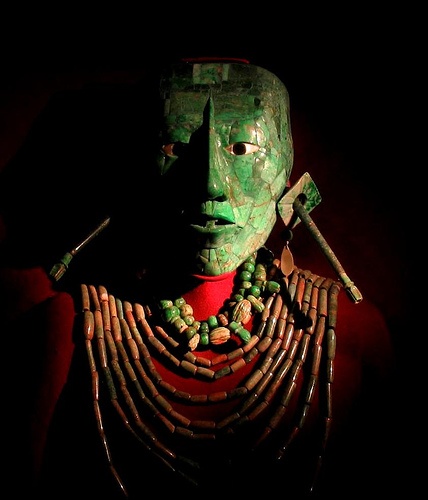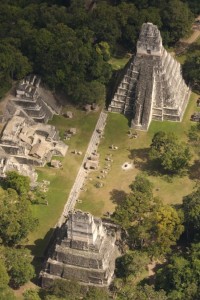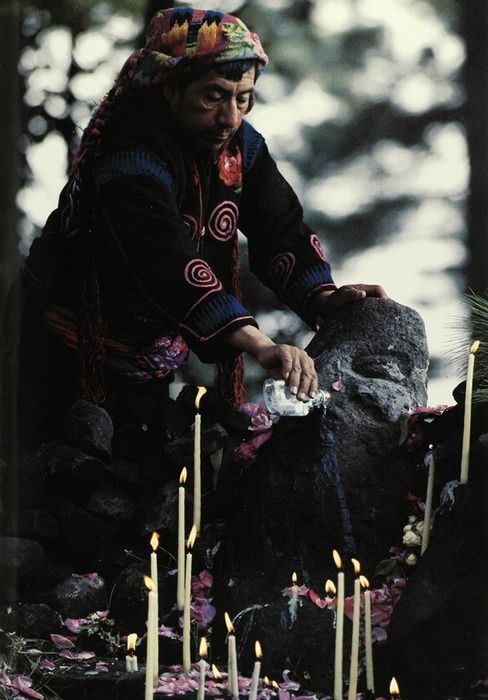
Pakal, Lord of Palenque
(Credit: forumprisonplanet.com)
Paris, 2012 — Thousands of miles away from his native Mexico, at the Pinacothèque museum, the eyes of a Mayan god meet those of spectators from around the world. He is a part of an exhibit that reveals, for the first time, one of the most important pre-Columbian archeological discoveries of all time: the Mayan death masks.

Mayan ruins, Tikal, Guatemala
(Credit: leyendomucho.blogspot.com )
The Mayan culture abounded in intellectual and creative energy. Their mathematical achievements still baffle us. The temples of Chican Itza, Tulum and Tikal remain testaments to a society so rich in art and tradition that we’re only beginning to understand its depths. Recently, there has been a resurgence amongst the descendants of the ancient Mayans to try and understand their ancestors. The discovery of the Mayan funerary or “death” masks in the past twenty years has been a huge step in that effort.
“…we’re only beginning to understand the depths of the Mayans.”
Much like the ancient Egyptians, the Mayans believed in the importance of preparing the high-ranking citizens of their societies (ex. kings and noblemen) for the passage into the next life. For some, this even meant the transformation into a god. That’s where the death masks come in.
The Mayans possessed a remarkable ability to fashion mosaic funerary masks out of jade, one of their most precious elements, for their dead royals. Though made of stone, the resulting masks contained an uncanny naturalness and likeness to their owners. Once finished, the mask would be placed upon the face of the dead, cementing his place as a god. “In this way,” stated curators of the exhibit in Paris, “one bestowed a certain power to the funerary masks to transform he who wore it by conferring unto him a sort of eternal life that his human body did not possess.”

A Mayan priest giving an offering to the mountain gods of earth, rain and thunder
(Credit: cosmic-dusttumblr.com)
Consider the mask of Pakal, lord of the Palenque. He came to power at the age of 12, and ruled for almost 70 intense, war-ridden years. When archeologists uncovered his tomb, they found his face covered in a funerary mask made of over 200 fragments of jade. His bones were covered in a suit of jade plaques, strung together by gold.
“…one bestowed a certain power to the funerary masks to transform he who wore it by conferring unto him a sort of eternal life that his human body did not possess.”
One of the most fascinating aspects of Mayan culture is their rich relationship to both the earth and the cosmos. They felt that the physical was a gift from the sacred, the intangible — the gods who gave them life. In this sense, jade represented everything from the abstract notion of eternal life to the humid, life-giving air of Mexico. It was a means to elevate and honor those who died, immortalizing them from the moment of their deaths to this very day.

 Immortalized in Stone: Mayan Death Masks
Immortalized in Stone: Mayan Death Masks


 Forest Bathing Eases Grief by Soaking in Nature
Forest Bathing Eases Grief by Soaking in Nature
 The Spiritual Symbolism of Cardinals
The Spiritual Symbolism of Cardinals
 Meaning-Focused Grief Therapy: Imaginal Dialogues with the Deceased
Meaning-Focused Grief Therapy: Imaginal Dialogues with the Deceased














